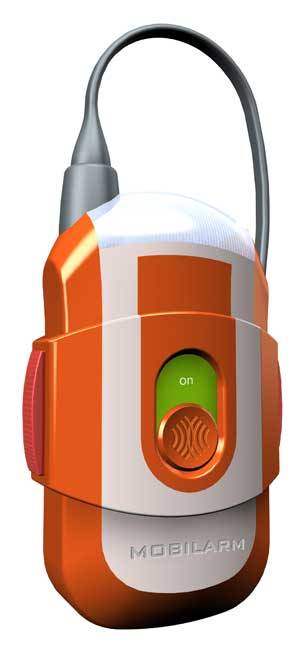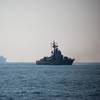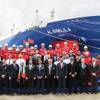VPIRB: New Marine Lifesaving Device
Mobilarm of Australia launched a new commercial marine product -- Mobilarm V100 VPIRB (VHF Position Indicating Radio Beacon, at the Offshore Technology Conference in Houston. The VPIRB is designed to provide commercial mariners with a faster, more efficient man overboard (MOB) rescue system than traditional personal EPIRB devices.
The Mobilarm V100 is a fully automated, position indicating radio beacon that transmits a MOB distress call via VHF DSC and VHF voice to all VHF radio equipped vessels and land based receivers within range, including the distressed mariner's vessel. The pocket-sized VPIRB is attached to clothing or lifejackets and will automatically activate if the wearer goes overboard, sending out a distress call and real time GPS coordinates of the casualty's current position.
The Mobilarm V100 VPIRB automatically sends out the initial 'Mayday, Man Overboard' alarm via DSC data using VHF DSC channel 70. As soon as a GPS lock is obtained via the integrated 24 channel GPS receiver, usually within 30 seconds, the device transmits the distress call again, complete with position coordinates, and also in a synthesized voice on VHF channel 16. The message is repeated at regular intervals to update the rescuers on its current position. This continues until the device is deactivated; the Mobilarm V100 battery will support transmission for at least 18 hours in normal conditions.
"The probability of survival in a man overboard situation is directly related to the length of time the person spends in the water,” said Lindsay Lyon, CEO, Mobilarm. “Conventional marine personal locating beacons, such as the personal EPIRB, must be manually activated to send a signal, which may be difficult or impossible to do if the person is injured or unconscious. In addition a personal EPIRB transmits its emergency signal to a remote onshore location, which can introduce needless delay in the recovery of the man overboard and can greatly reduce their chances of survival."
Sending an emergency signal to nearby vessels, rather than an onshore location, means that the other crew members who are usually in the best position to conduct a rescue, are alerted and deployed virtually immediately. This reduces the casualty's time in the water and represents a quantum improvement in their chances of survival.
Another tangible benefit to the Mobilarm V100 is that as long as a VHF radio is onboard, no other equipment need be installed. Unlike 121.5 MHz direction finding beacons and satellite locating systems, which demand dedicated receiving base stations, direction finding equipment or satellite time rental, the Mobilarm V100 VPIRB uses only existing industry standard VHF marine radio networks.
For more information, Email













